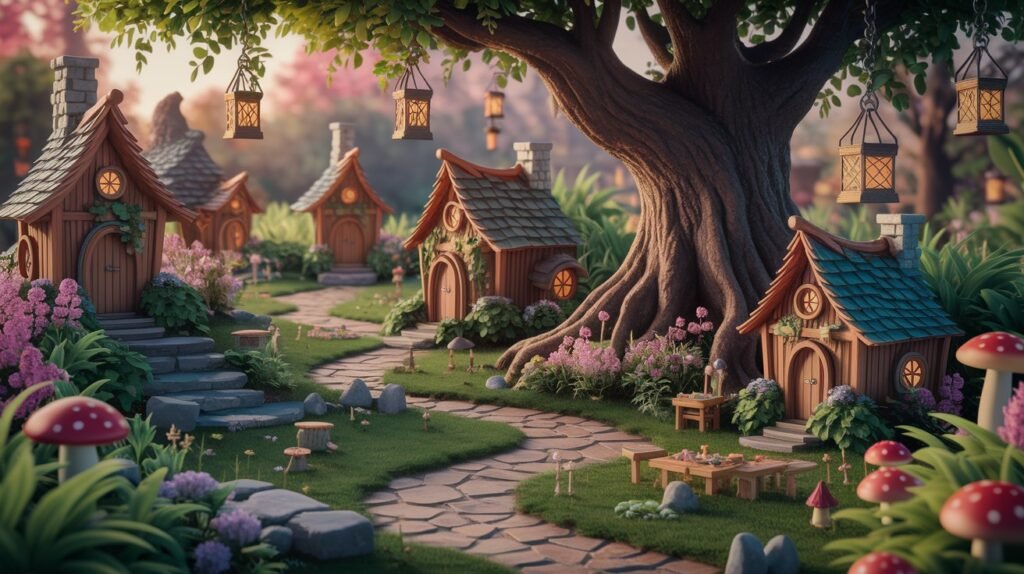There’s something special about creating a miniature world in your backyard. Maybe you’ve seen those tiny fairy gardens in small pots and wondered how to go bigger. Or perhaps your kids keep asking for a “real” fairy house they can actually see and play around in.
You’re in the right place.
This guide shows you 9 proven large outdoor fairy garden ideas that work. No complicated designs or expensive materials required. Just practical, beautiful concepts you can create this weekend.
Here’s what you’ll get: Step-by-step ideas for different themes and spaces, plant recommendations that won’t outgrow your design, real photos from gardeners who’ve made these successfully, and budget-friendly tips using items you probably already own.
I’ve helped hundreds of families create these magical spaces over the past decade. From simple village setups to impressive water features, these ideas have been tested in real backyards.
Time to create something beautiful? Let’s start.
Magical Large Outdoor Fairy Garden Ideas
Picture this: You walk into your backyard and see a miniature world where tiny fairies could live. Not just a small pot on your patio. I’m talking about a full-sized outdoor space that makes both kids and adults stop and stare.
That’s exactly what I’m going to show you today.
1. Whimsical Fairy Garden Village
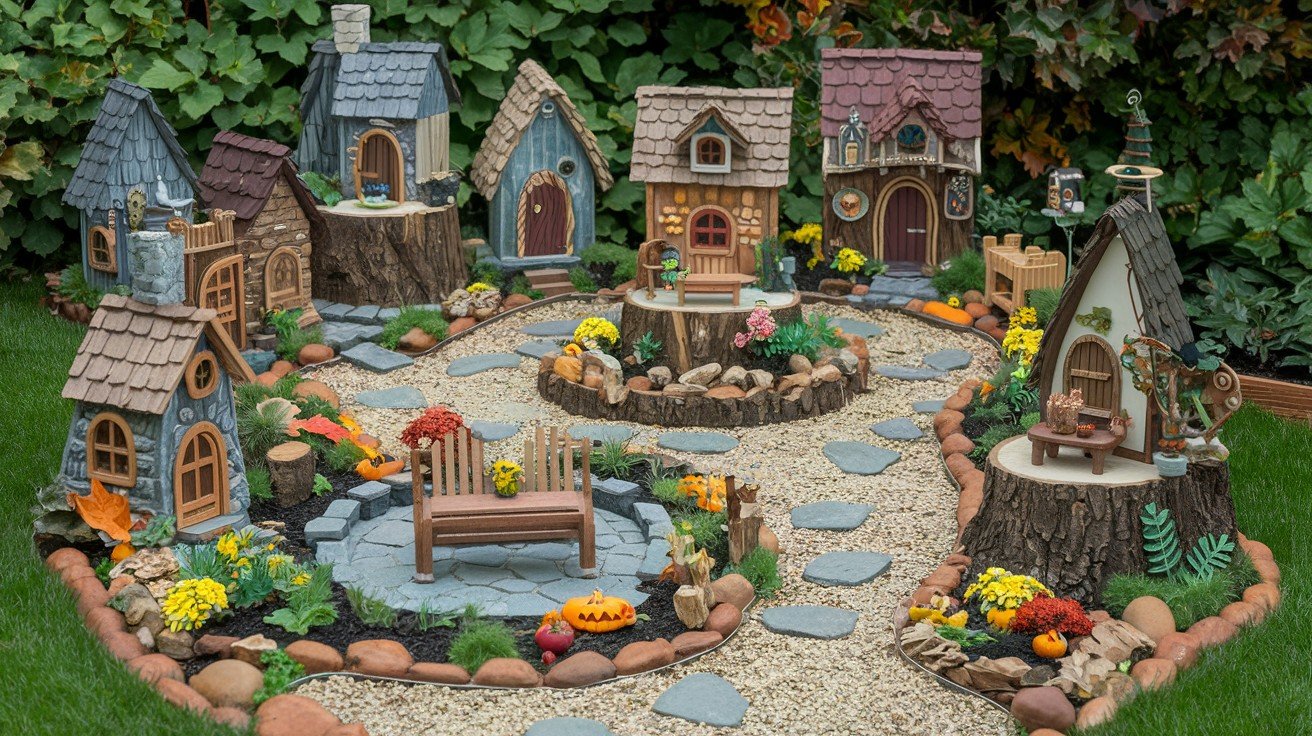
Let’s start with something really fun. A fairy village is like building a tiny town in your yard. I always tell people to think of it as making neighborhoods. You’ll have different areas where your fairy families can live, work, and play.
Start with the houses. Mix different materials like wood, stone, and resin. Don’t make them all the same. Real towns have variety, right? Next, add pathways. Use pea gravel or river rocks. These work best because they look natural and stay in place.
Build different zones like residential areas with cozy fairy homes, market squares with tiny benches, and gathering spaces for fairy parties. Use what nature gives you. Tree stumps make perfect fairy apartment buildings. Slopes become hillside neighborhoods.
Want to make it extra special? Add miniature street signs and fairy-sized furniture. The magic happens when you add seasonal decorations. Tiny pumpkins in the fall. Mini Christmas trees in winter.
2. Multi-Level Retaining Wall Fairy Garden
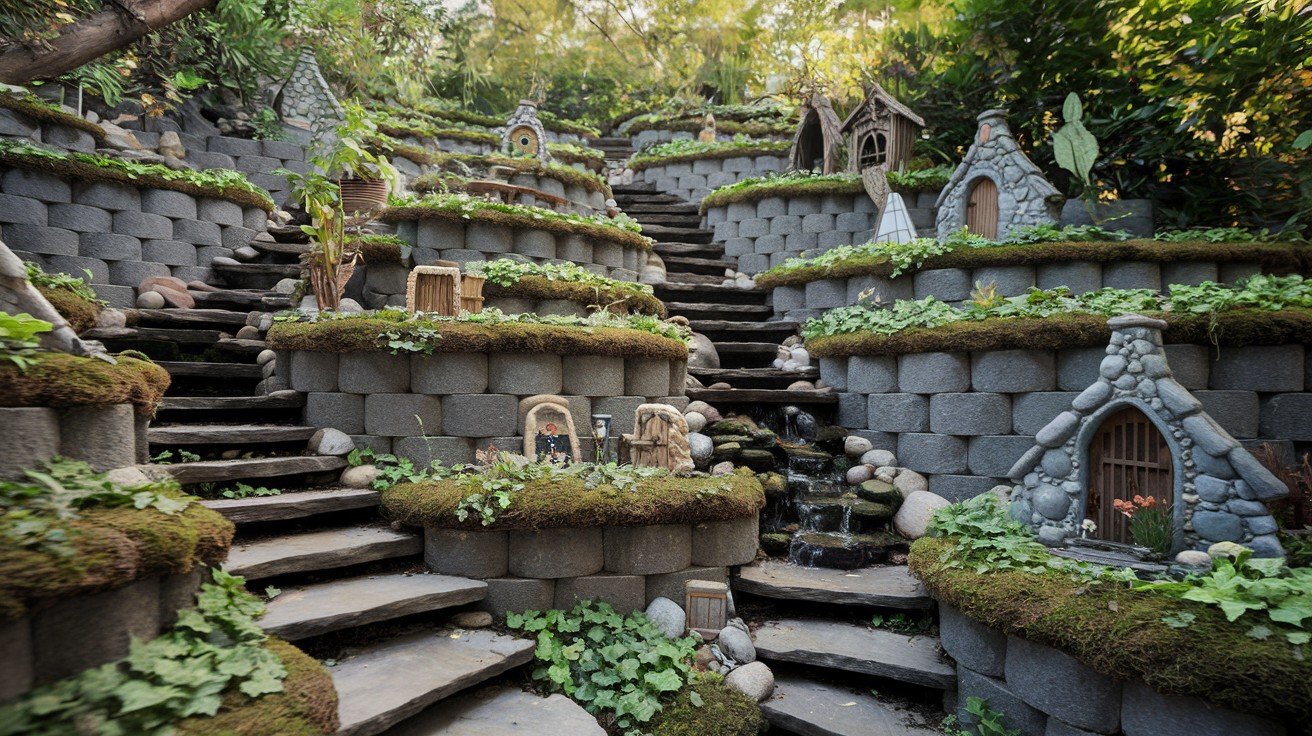
This one’s my personal favorite. Why? Because it uses vertical space like a pro. Think of it as fairy condos. Multiple floors, each with its personality.
Start by making terraced levels. Use stone or wooden retaining walls. Don’t worry if you’re not a construction expert. Simple stacking works fine. The secret is making height differences. Fairies need stairs, just like we do. Flat river rocks make perfect miniature steps.
Here’s a pro tip: Use broken pottery pieces to fill gaps. Mix them with clay-heavy soil to make natural glue. Add water trickling between levels. It doesn’t need to be fancy. Just enough to make gentle sounds. Plant strategically. Put trailing plants on upper levels. They’ll cascade down like natural curtains.
3. Babbling River and Water Feature Fairy Garden
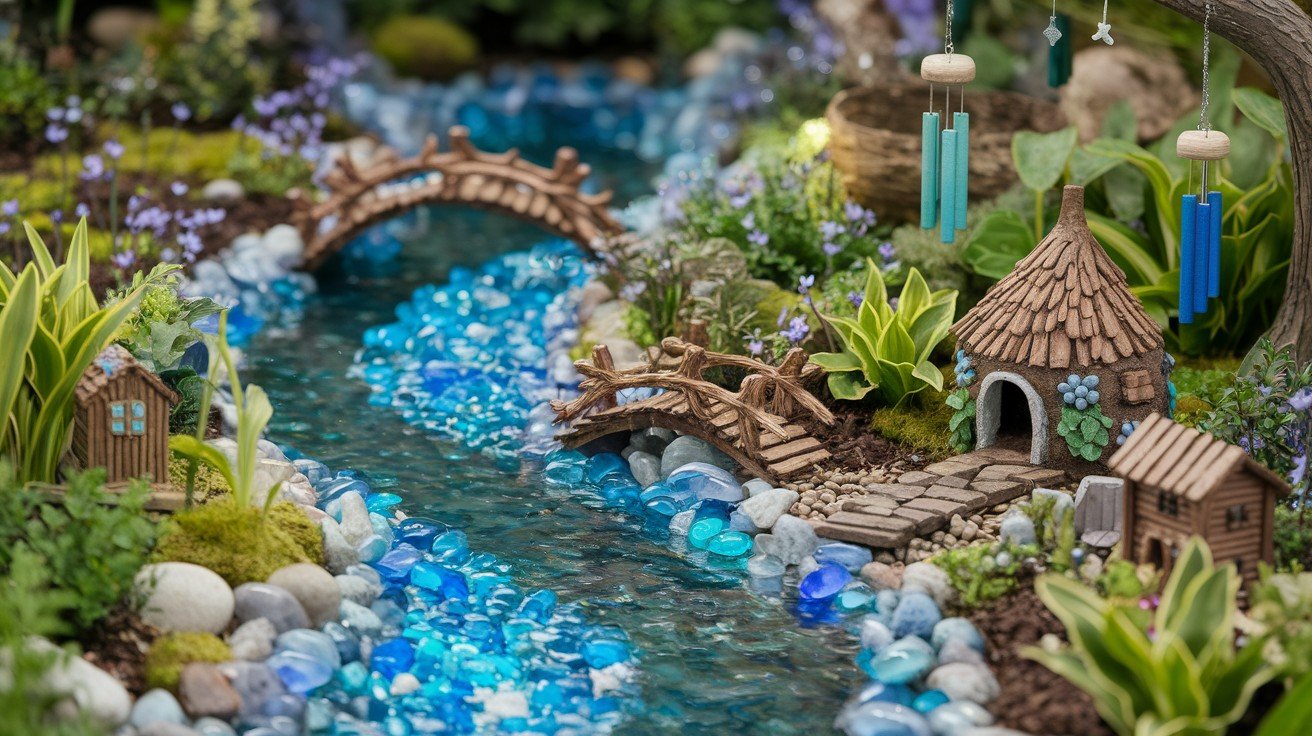
Water changes everything. Trust me on this. I’ve seen kids spend hours watching tiny streams flow through fairy gardens. There’s something hypnotic about moving water.
You don’t need an expensive pump system. Sometimes the best water features are the fake ones. Use blue stones and sea glass. Arrange them like a flowing river. Add some clear marbles for sparkle.
Want actual water? Make a simple stream with rocks and aquatic plants. Add miniature bridges for fairy crossings. The sound matters too. Hang wind chimes nearby. When the breeze blows, you get magical water sounds without actual plumbing. Build fairy houses right next to your “water.” Fairies need easy access for their morning baths.
4. Camping and Adventure Theme Fairy Garden
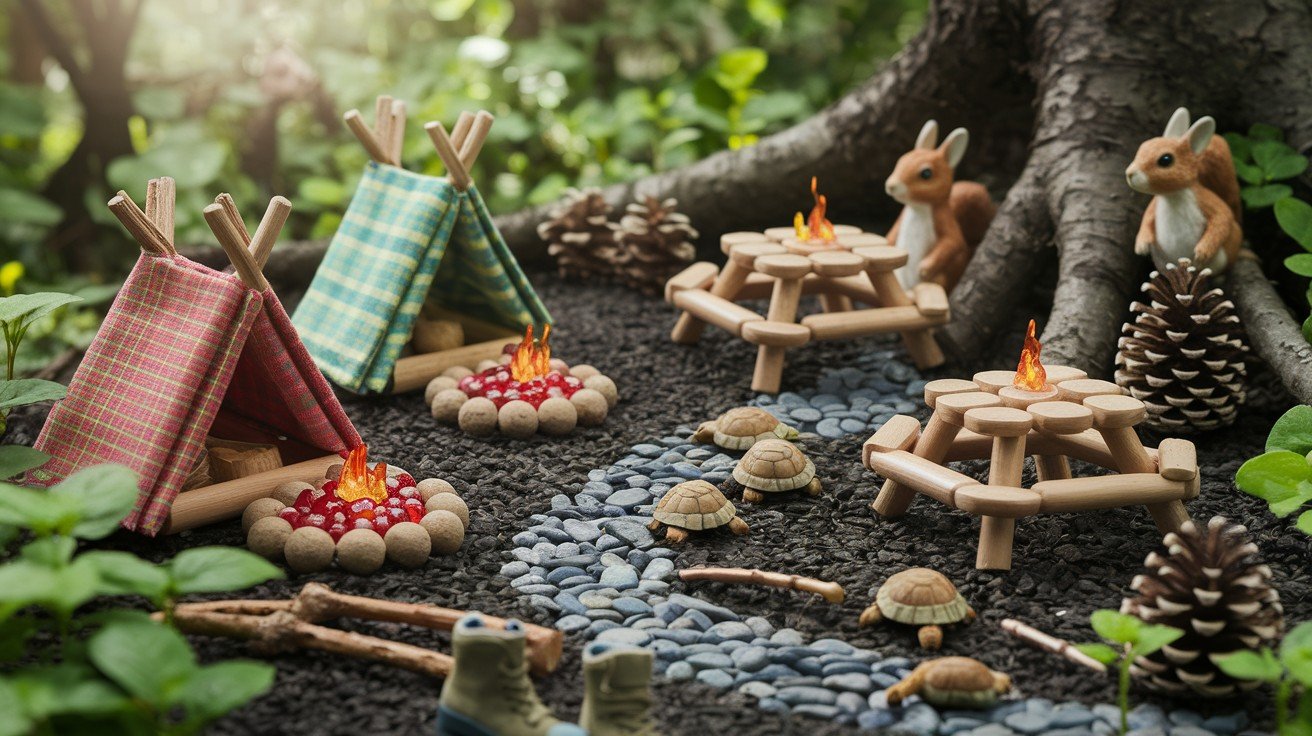
This one’s perfect if your kids love the outdoors. And honestly, who doesn’t? Build a fairy campground. Use natural materials you probably already have in your yard.
Make tiny campfires with small sticks and red glass pebbles for “flames.” Build miniature tents from fabric scraps. Logs become fairy picnic tables. Pinecones turn into camp chairs. Bark pieces make rustic signs.
Add some personality with woodland creatures peeking from behind trees, tiny tortoises wandering the campsite, and miniature hiking boots by tent doors. Make actual hiking trails through your garden. Use twigs to mark the paths.
The best part? You can change the camping scenes with the seasons. Summer fishing trips. Fall leaf-watching expeditions.
5. Stone Cottage and English Garden Theme
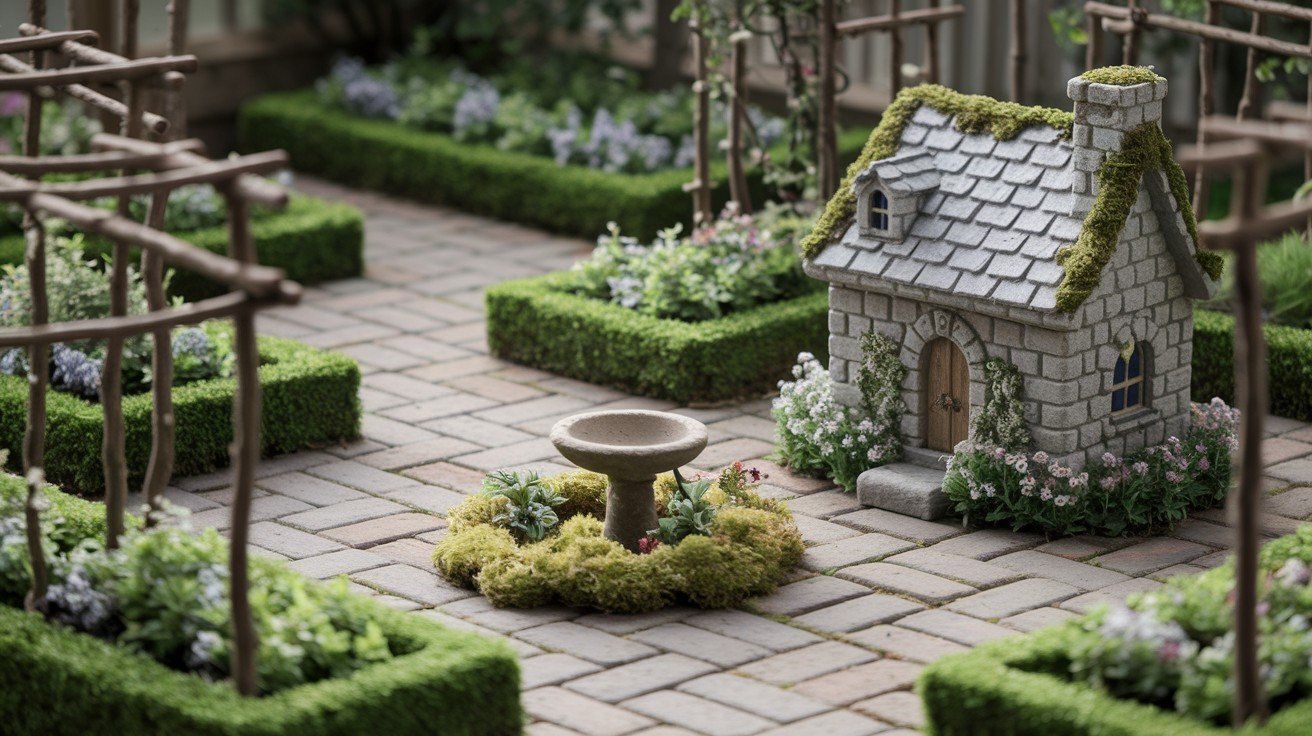
Want something more formal? This idea brings old-world charm to your backyard. Think English countryside. Stone cottages covered in moss. Formal garden beds with tiny hedges.
Start with traditional stone fairy houses. Add moss and small flowers around the base. This gives that aged, lived-in look. Plant cottage garden favorites like miniature roses, small herbs like thyme, and tiny wildflowers.
Add brick paver pathways. They should look worn and weathered. New bricks are too shiny for fairy gardens. Build simple pergolas using thin branches. Train climbing plants up the sides. Don’t forget the bird bath. Every English garden needs one.
6. Upcycled Container Fairy Village
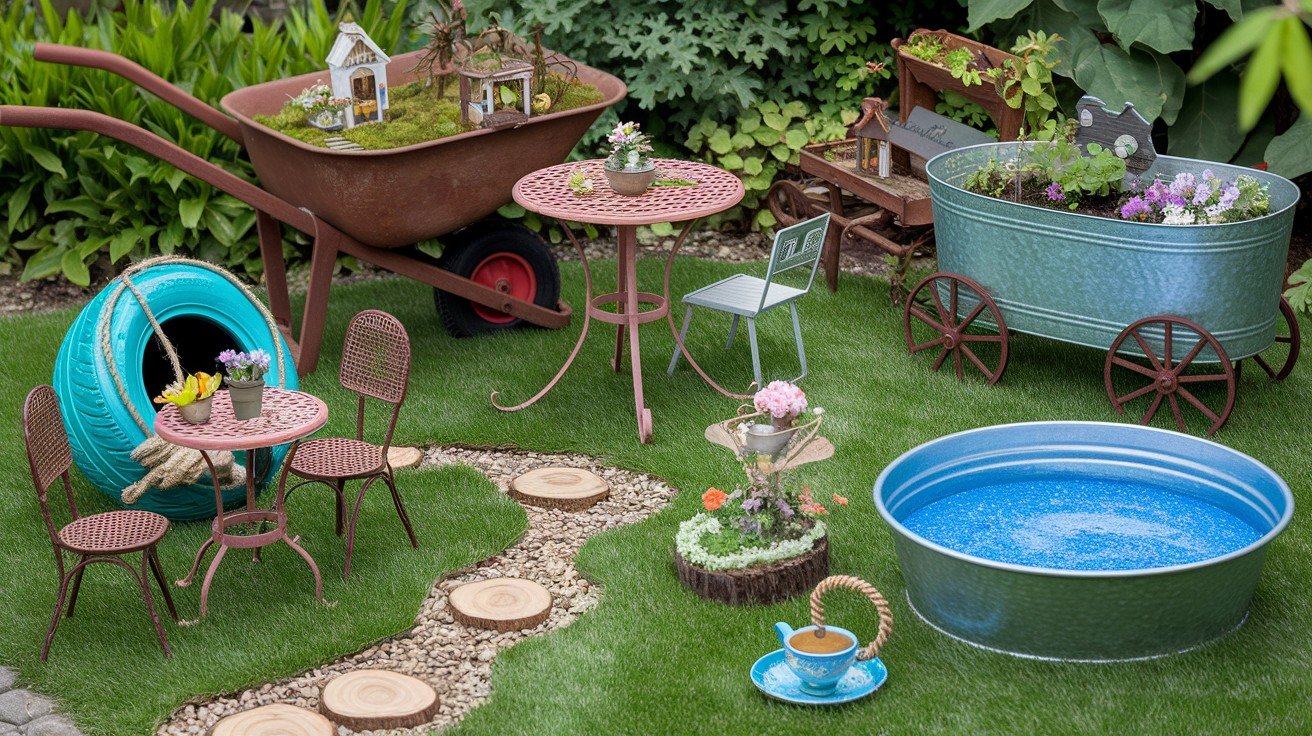
This is where you get smart with junk. I love this approach because it’s budget-friendly and environmentally wise. Look around your garage. Old wheelbarrows make fantastic fairy neighborhoods. Galvanized tubs become fairy swimming pools.
Broken wagons are perfect for fairy transportation hubs. Old bistro sets become instant fairy cafes. Leaky birdbaths turn into planters. The trick is connecting everything. Use pathways to link different containers. Add small bridges between levels.
I once saw someone turn an old tire into a teacup garden. Brilliant idea. Paint it bright colors and add a handle made from rope.
7. Tree-Based Fairy Community
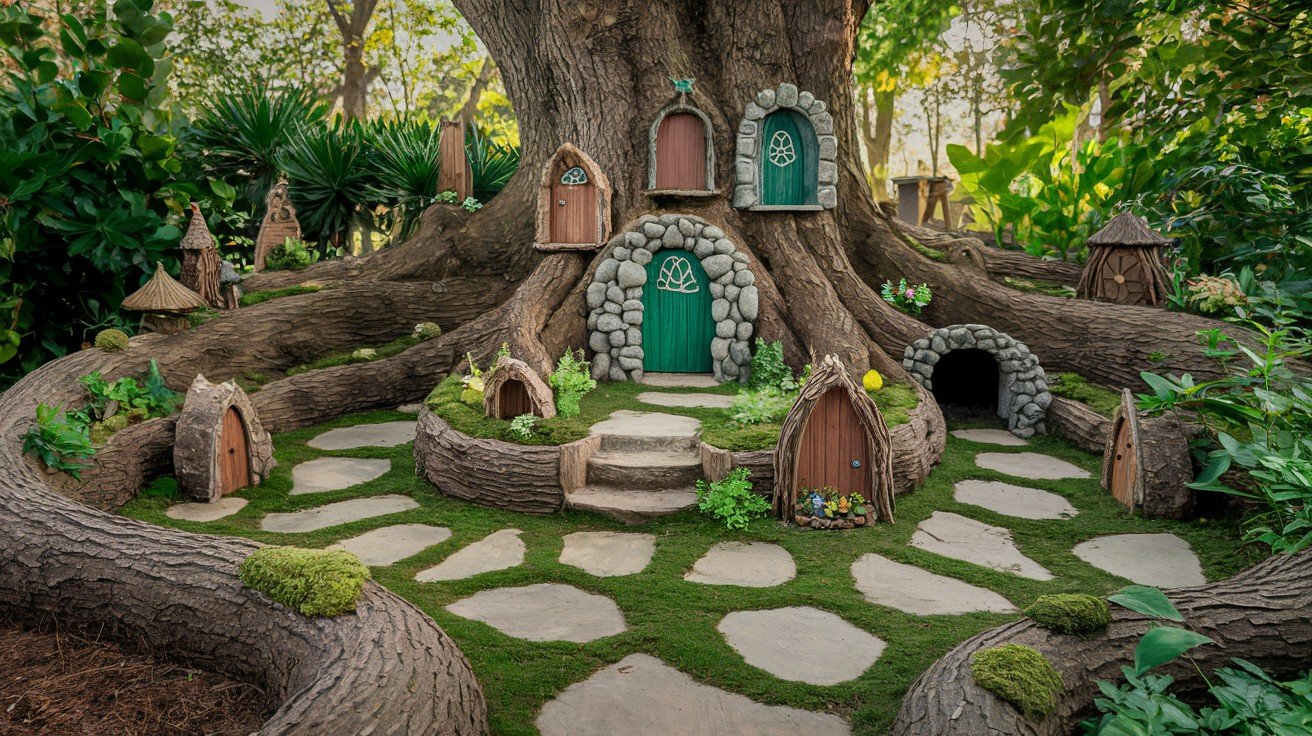
Already have big trees? Perfect. You’re halfway done. Trees make natural apartment buildings for fairies. Use the existing structure to your advantage.
Add fairy doors to the trunk. Carved wood works, but painted rocks are easier. Place them at different heights for multi-story living. Build houses around the tree base. Use bark and twigs to match the natural surroundings.
Tree hollows are gold mines. Turn them into fairy caves or storage areas. Make pathways that circle the tree. Use natural stepping stones. Add moss between the stones for that forest floor feel. The roots give you natural landscaping. Work with them, not against them.
8. Beach and Coastal Theme Fairy Garden
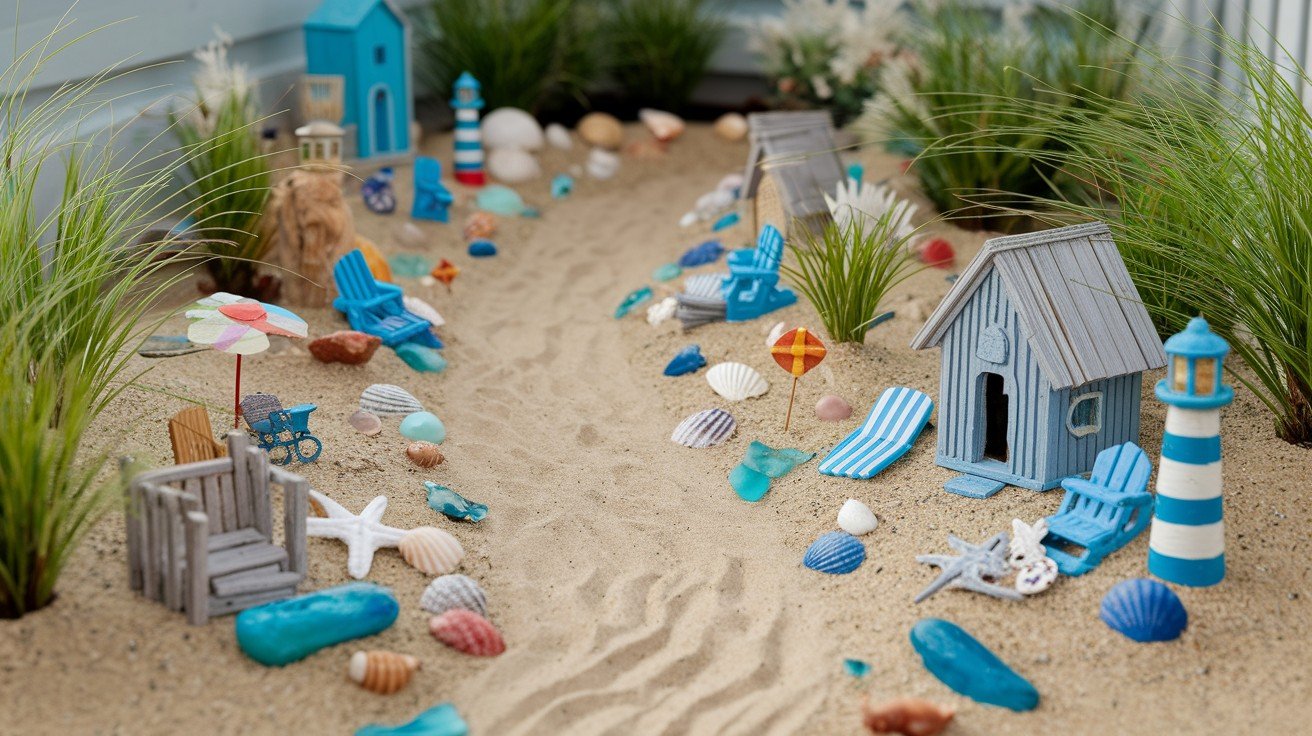
Who says fairies only live in forests? Beach fairies need homes, too. Make sandy pathways using actual sand or fine gravel. Add shells and sea glass for authentic coastal vibes.
Build miniature lighthouses from painted rocks or small containers. Beach cottages work great too. Add essential beach accessories like tiny surfboards made from craft sticks, miniature beach chairs, and small coastal signs.
Use weathered wood for an authentic beach cottage look. If you don’t have any, leave regular wood outside for a few months. Make suns with small hills. Plant coastal grasses or similar-looking small plants.
9. Enchanted Forest Fairy Garden
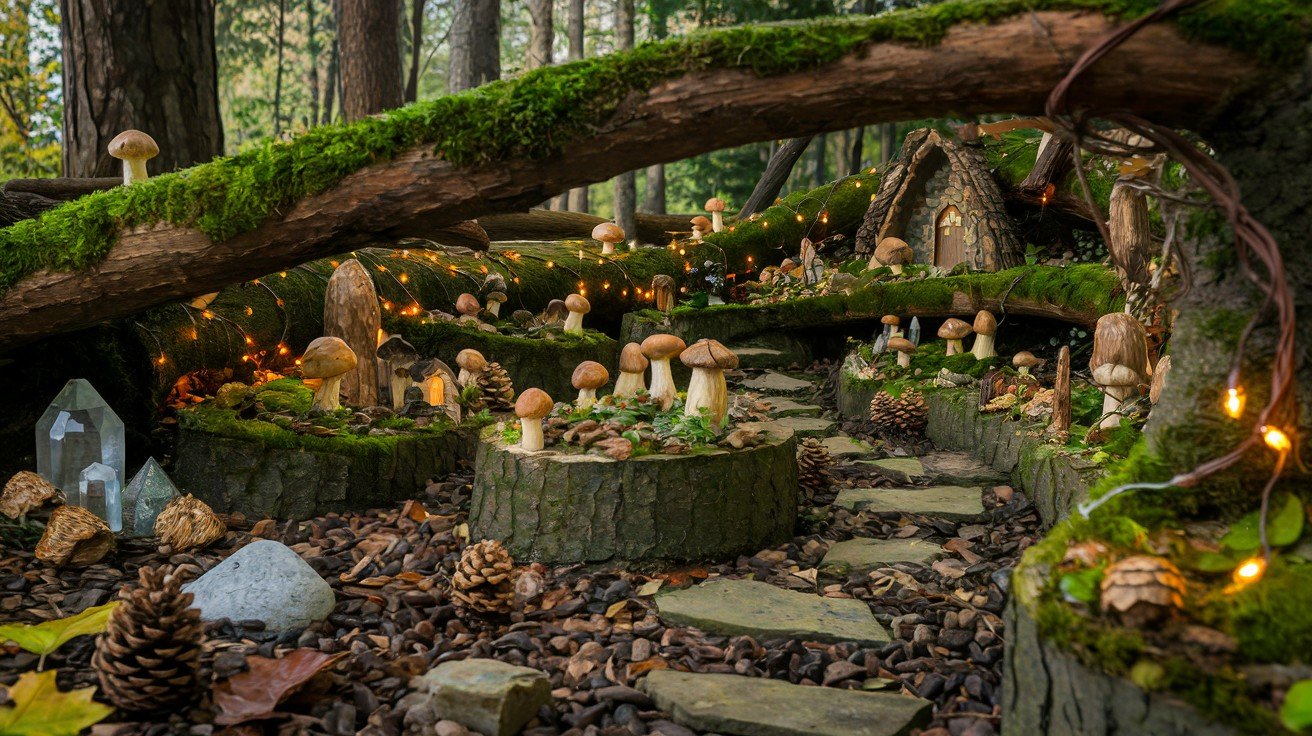
This is the most magical option. Perfect for shady areas under existing trees. Use what the forest provides. Moss-covered logs become fairy highways. Mushrooms turn into fairy furniture.
Collect natural materials like interesting bark pieces, small pinecones, smooth river rocks, and colorful leaves that change seasonally. Add battery-operated fairy lights. String them through branches for nighttime magic.
Crystals and smooth stones add mystical elements. Place them strategically around fairy houses. Make hidden pathways that wind through the forest floor. Use fallen branches to mark the way. The goal? Make it look like fairies live there.
Conclusion
Creating a large outdoor fairy garden doesn’t have to be overwhelming or expensive. You now have 9 magical ideas that can work in any yard, regardless of size or budget.
Start small. Pick one idea that speaks to you. Maybe it’s the simple village setup or the charming tree-based community. Get your hands dirty this weekend and see what happens.
Remember, there’s no perfect fairy garden. Each one tells its own story. Your kids will love helping, and you’ll be surprised how much joy these little worlds bring to your everyday life.
The magic isn’t just in the finished product. It’s in the process of creating something special together.
Which idea will you try first? Your fairy friends are waiting for their new home.
Happy gardening!
Frequently Asked Questions
How much space do I need for a large outdoor fairy garden?
Large fairy gardens can range from 4×4 feet to entire garden sections, depending on your available space and creative vision.
What’s the average cost to create a large fairy garden?
Basic large fairy gardens cost $100-300, while elaborate multi-zone designs with premium accessories can range $500-1000 or more.
Which plants work best in large outdoor fairy gardens?
Choose small-leafed, slow-growing plants like succulents, herbs, miniature roses, and ground covers that won’t outgrow the space quickly.
How do I maintain a large fairy garden throughout the seasons?
Regular watering, pruning overgrown plants, cleaning accessories, rotating seasonal decorations, and protecting delicate elements from harsh weather.
Can I create a large fairy garden in a shaded area?
Yes! Use shade-loving plants like ferns, hostas, moss, impatiens, and lobelia for beautiful shaded fairy garden spaces.

